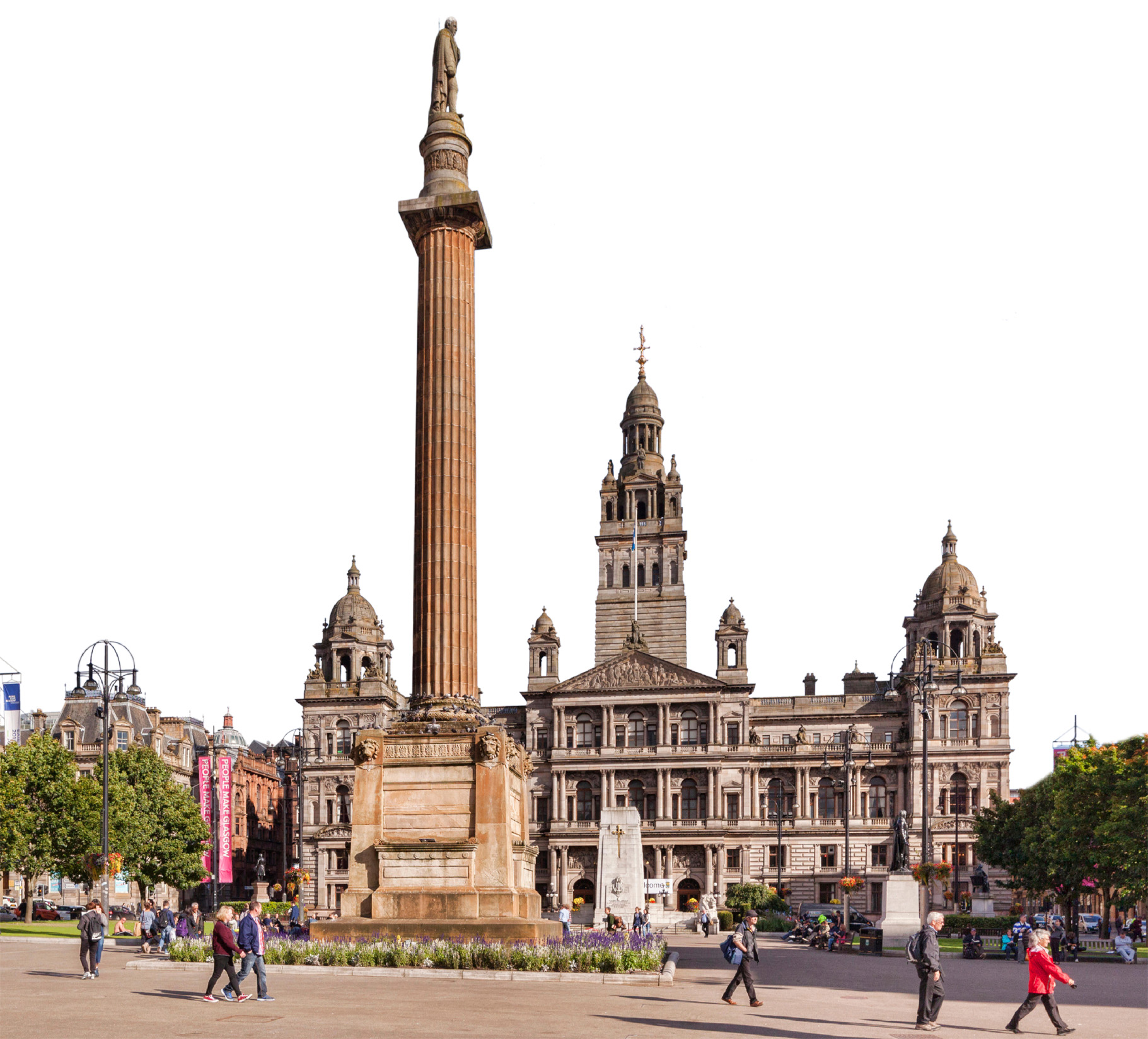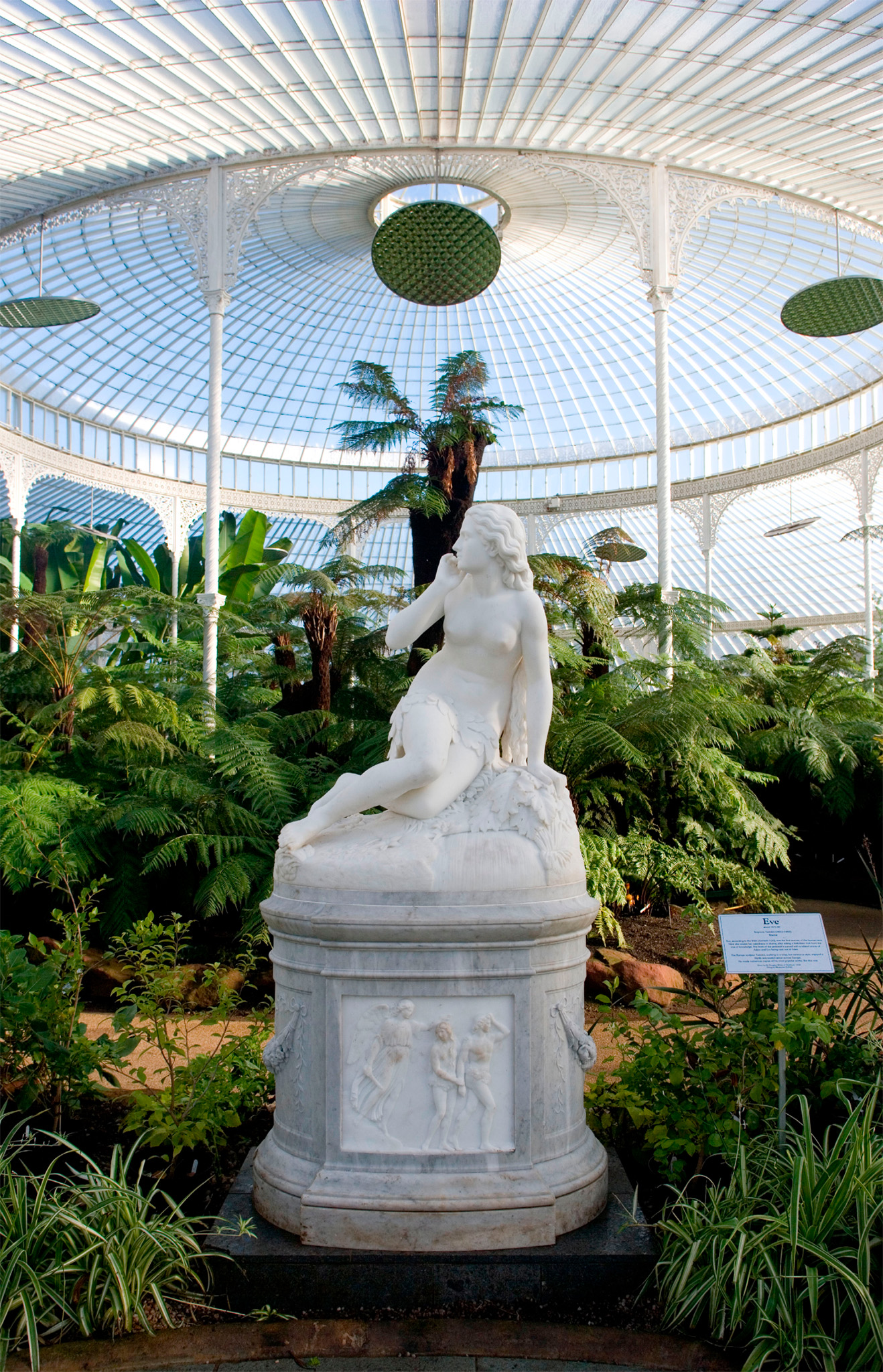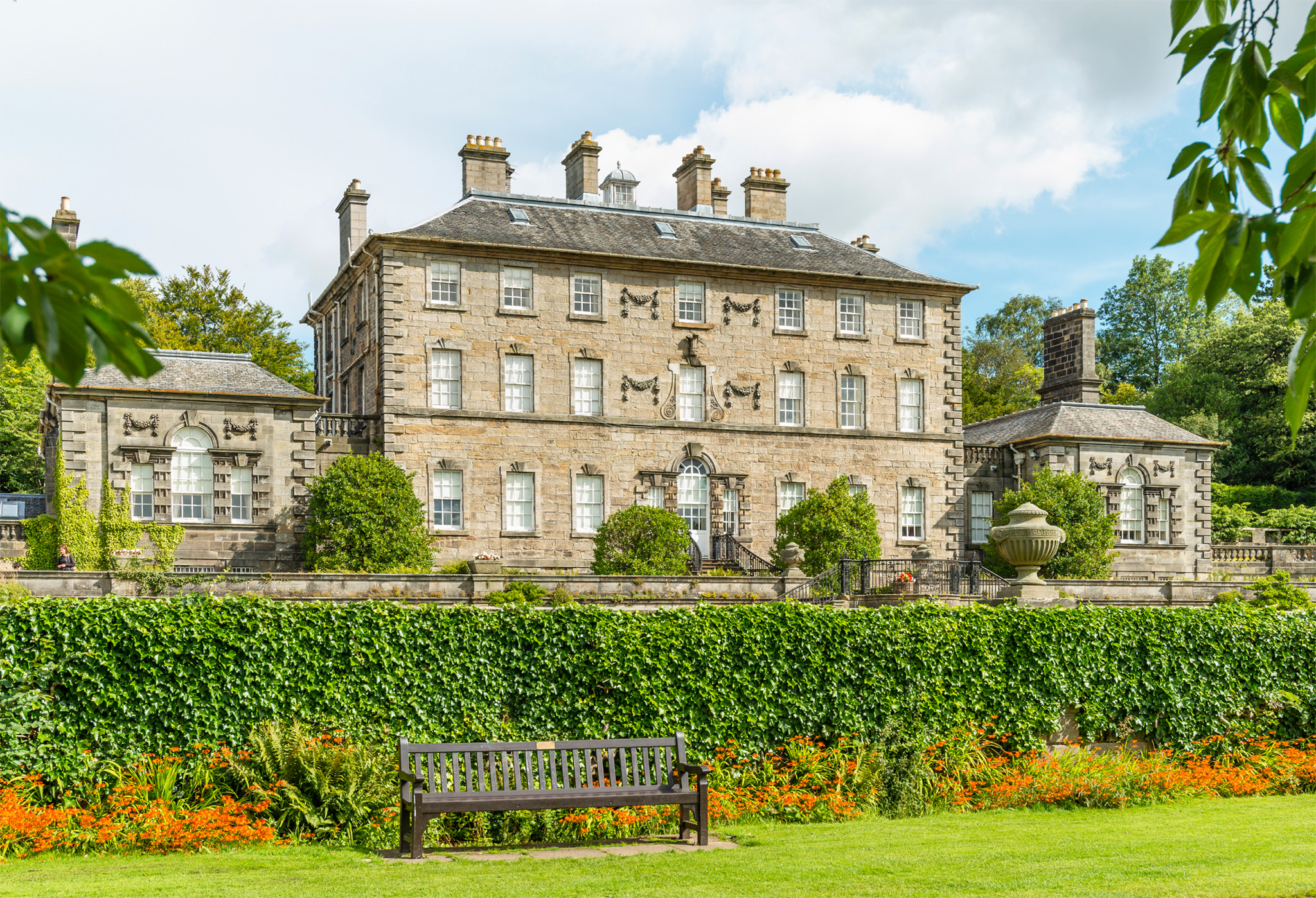experience more

t Monument to Sir Walter Scott rising above the City Chambers on George Square
George Square was laid out in the late 18th century as a residential area, but Victorian redevelopment conferred its enduring status as the city’s focal point. The only building not to be affected by the later 19th-century makeover is the Millennium Hotel (1807) on the north side of the Square.
The 1870s saw a building boom, with the construction of the former Post Office (1876) at the southeast corner, and the Merchants House (1877) to the west side. The latter is home to Glasgow’s Chamber of Commerce, founded in 1781 and the UK’s oldest organization of its kind. The dominant structure, however, is the City Chambers on the east side. Designed by William Young in Italian Renaissance style, the imposing building was opened in 1888 by Queen Victoria. With its elegant interior, decorated in marble and mosaic, the opulence of this building makes it the most impressive of its type in Scotland.
City Chambers
" ' ⌂ 82 George St # Guided tours only: 10:30am & 2:30pm Mon–Fri

t Gallery of Modern Art, in the Royal Exchange building, surrounded by fairy lights
Once the home of Glasgow’s Royal Exchange (the city’s centre for trade), this building dates from 1829 and also incorporates a late-18th-century mansion that formerly occupied the site. The local authority took over the Exchange just after World War II, and for many years it served as a library. It finally opened its doors as the Gallery of Modern Art in 1996. One of the largest contemporary art galleries outside London, the GoMA is constantly building on its collection of work by Glasgow-based artists. Accordingly, most of the gallery is home to a lively and thought-provoking programme of temporary exhibitions featuring work by Scottish and international artists. Many of these focus on contemporary and social issues, often featuring groups that are marginalized in today’s society.
Widely regarded as Charles Rennie Mackintosh’s masterpiece, Glasgow School of Art is a well-loved Glasgow institution. Erected between 1897 and 1909, it was noted for the ground-breaking style of the exterior and high level of attention that Mackintosh devoted to every detail within, from decorative woodwork and windows to door handles and light switches. The interior was damaged by fire in 2014 and was due to reopen in 2019 after meticulous restoration. Tragically, a second and more severe fire in 2018 virtually destroyed the building, raising doubts over whether it could, or should, be rebuilt at all.
Glasgow has strong religious roots, and the settlement that grew to become today’s city started with a monastery founded in the 6th century AD by a priest called Mungo. He died in the early years of the 7th century, and his body lies buried underneath Glasgow Cathedral. The building itself dates from the 12th century, and stands on ground blessed by St Ninian as long ago as AD 397. The ever-growing numbers of visitors to the cathedral eventually prompted plans for an interpretive centre. Despite the efforts of the Society of Friends of Glasgow Cathedral, however, sufficient funds could not be raised. The local authority decided to step in with money, and with the idea for a more extensive project – a museum of religious life and art. The site chosen was adjacent to the cathedral, where the 13th-century Castle of the Bishops of Glasgow once stood. The museum has the appearance of a centuries-old fortified house, despite the fact that it was completed in 1993. The top floor describes the story of the country’s religion from a non-denominational perspective. Both Protestant and Catholic versions of Christianity are represented, as well as the other faiths of modern Scotland. The many, varied displays touch on the lives of communities as extensive as Glasgow’s Muslims, who have had their own Mosque in the city since 1984, as well as local followers of the Baha’i faith. The other floors are given over to works of art – among them is Craigie Aitchison’s Crucifixion VII, which sits alongside religious artifacts and artworks such as burial discs from Neolithic China (2000 BC), contemporary paintings by Aboriginal Australians, and some excellent Scottish stained glass from the early part of the 20th century. Further displays examine the issues that are of fundamental concern to people of all religions – war, persecution, death and the afterlife – and exhibits from cultures as far afield as West Africa and Mexico. In the grounds surrounding the building, there is a permanent Zen Garden, which was created by Japanese garden designer Yasutaro Tanaka. Such gardens have been a traditional aid to contem-plation in Japanese Buddhist temples since the beginning of the 16th century.
Did You Know?
Glasgow’s name comes from the Gaelic phrase meaning green valley or dear green place.
Experience Glasgow
|
SHOP The Barras This most Glaswegian of markets is a glorious mix of stalls selling everything under the sun. The Glasgow Vintage and Flea Market is a regular weekend fixture. F5 ⌂ 244 Gallowgate ∑ theglasgowbarras.com Princes Square This five-storey atrium beneath a Victorian glass cupola is a paradise for fans of big-name fashion, with brands such as Vivienne Westwood, Kurt Geiger and Belstaff. E4 ⌂ 48 Buchanan St ∑ princessquare.co.uk Argyll Arcade Glasgow’s glittering emporium of bling gleams with new and pre-loved goods, from luxury watches to diamond rings and vintage jewellery. E4 ⌂ Argyll St ∑ argyll-arcade.com |
These gardens form a peaceful space in the heart of the city’s West End, by the River Kelvin. Originally founded at another site in 1817, they were moved to the current location in 1839 and opened to the public three years later. Aside from the main range of greenhouses, with assorted displays including palm trees and an area of tropical crops, one of the most interesting features is the wrought-iron framed Kibble Palace. Built at Loch Long in the Highlands by John Kibble, the glass palace was moved to its present site in the early 1870s. It houses a collection of carnivorous plants and tropical orchids and the national collection of tree ferns.

t Eve, by Scipione Tadolini, in a glasshouse, Glasgow Botanic Gardens

great View
Glasgow Necropolis
Glasgow Cathedral’s hauntingly beautiful necropolis boasts great views over the city’s rooftops. Modelled on the Père Lachaise cemetery in Paris, it’s a welcome escape from the busy streets below.
More a time capsule than a museum, the Tenement House is an almost undisturbed record of life as it was in a modest Glasgow flat on a tenement estate in the early 20th century. Glasgow owed much of its vitality and neighbourliness to tenement life, though in later years many of these Victorian and Edwardian apartments were to earn a bad name due to increased poverty and extreme overcrowding, which resulted in many of them having to be pulled down.
The Tenement House was the home of Miss Agnes Toward, who lived here from 1911 until 1965. It remained largely unaltered during that time and, since Agnes threw very little away, the house has become a treasure-trove of social history. In the parlour, which would have been used only on formal occas-ions, afternoon tea is laid out on a white lace cloth. The kitchen, with its coal-fired range and box bed, is filled with the tools of a vanished era, such as a goffering-iron for ironing lace, a washboard and a stone hot-water bottle.
Agnes’s lavender water and medicines are still arranged in the bathroom as though she stepped out of the house 70 years ago and forgot to return.
Built in 1898 as a cultural museum for the people of Glasgow’s East End, this building houses everything from temperance tracts to trade-union banners, suffragette posters to comedian Billy Connolly’s banana-shaped boots, providing a social history of the city from the 12th to the 20th century. A superb conservatory contains an exotic winter garden.
One of the few churches to survive the Reformation by adapting itself to Protestant worship, Glasgow Cathedral is a rare example of an original 13th-century church.It was built on the site of a chapel founded by the city’s patron saint, St Mungo, a 6th-century bishop. According to legend, Mungo placed the body of a holy man on a cart yoked to two wild bulls, telling them to take it to the place ordained by God. There he built his church.
The crypt contains the intricate tomb of St Mungo. The Blacader Aisle is reputed to have been built over an existing cemetery that was blessed by St Ninian.
Behind the cathedral, a likeness of John Knox overlooks the necropolis containing monuments to the dead of Glasgow’s wealthy.
Did You Know?
The 2,500-tonne roof of the Riverside Museum is one of the UK’s most complex structures.

t Iconic jagged structure of the Riverside Museum on the Clyde waterfront
This landmark attraction sits on the Clyde in a dramatic zinc-panelled building designed by architect Zaha Hadid. Focused on transport and its social impact on the city, the museum is crammed with locomotives and road vehicles of all styles and vintages. A tall ship, berthed alongside, is also open to the public.
Built as a canon’s house in 1471, Provand’s Lordship is now Glasgow’s oldest surviving house. Its low ceilings and wooden furniture create a vivid impression of life in a wealthy 15th-century household. Mary, Queen of Scots may have stayed here when she visited Glasgow in 1566 to see her cousin, and husband, Lord Darnley.
This museum, housed in a former school designed by Charles Rennie Mackintosh, contains audio-visual exhibits and reconstructed and restored classrooms to reflect developments in education from the Victorian era to the 1960s. You can read and hear recollections of former pupils covering topics such as classroom discipline, evacuation and World War II, school attire and playground games.
Built specifically to house a number of paintings bequeathed to Glasgow University by an ex-student and physician, Dr William Hunter (1718–83), the Hunterian contains Scotland’s largest print collection, with works by many major European artists dating from the 16th century.
A collection of work by celebrated Glasgow designer Charles Rennie Mackintosh, often cited as the father of the famous “Glasgow School”, known as the “Glasgow Boys”, a group of painters that came to fame at the beginning of the 20th century, is supplemented by a reconstruction of his home at No. 6 Florentine Terrace, where he lived from 1906 to 1914.
The building also houses a major collection of 19th- and 20th-century Scottish art, but by far the most famous collection is that containing works by the Paris-trained American painter James McNeill Whistler (1834–1903), who influenced so many of the Glasgow School painters.
Experience Glasgow
Charles Rennie Mackintosh

Glasgow’s most celebrated designer (1868–1928) entered Glasgow School of Art at the age of 16. After his success with the Willow Tea Room, he became a leading figure in the Art Nouveau movement. His characteristic straight lines and flowing detail are the hallmark of early 20th-century style.
Plans for the House for an Art Lover were submitted by Charles Rennie Mackintosh and his partner Margaret Macdonald in response to a competition in a German magazine in the summer of 1900. The competition brief was to create a country retreat for someone of elegance and taste who loved the arts. As it was a theoretical exercise, the couple were unrestrained by logistics or budget and won a special prize for their efforts. The plans lay unused for over 80 years until consulting engineer Graham Roxburgh, who had been involved in the refurbishment of other Mackintosh interiors in Glasgow, decided to build the House for an Art Lover. Construction began in 1989 and was completed in 1996. The House is host to a digital design studio and post-graduate study centre for students at the Glasgow School of Art. The rooms on the main floor give a real insight into the vision of Mackintosh and the artistic talent of Macdonald. The Oval Room is a beautifully proportioned space in a single light colour, designed to be a tranquil retreat for ladies, while the Music Room and its centrepiece piano (enclosed within a four-poster bed) that is played to add to the atmosphere, is also bright and inspiring. The Main Hall leads into the Dining Room, which contains a long table, sideboard and relief stone fireplace. The great attention to detail demonstrated throughout the House, in the panelling, light fixtures and other elements, is enormously impressive. The exterior of the building is also an extraordinary achievement in art and design.

t Sun shining through medieval stained glass at the Burrell Collection
Given to the city in 1944 by Sir William Burrell (1861–1958), a wealthy shipping owner, this internationally acclaimed collection is the gem in Glasgow’s crown, but it is closed for refurbishment until 2020. The 9,000-piece collection features over 600 medieval stained-glass panels, 150 tapestries, a collection of ancient Middle Eastern, Greek and Roman treasures, Chinese ceramics and superb Oriental embroideries and carpets, and even celebrated works by Old Masters such as Rembrandt’s Self Portrait (1632). Additional displays will be unveiled when the collection reopens.

t Grand exterior of Pollok House surrounded by lush parkland
Glasgow’s finest 18th-century domestic building boasts one of Britain’s best collections of Spanish paintings. The Neo-Classical central block of Pollok House was finished in 1750, the sobriety of its exterior contrasting with the exuberant plasterwork within.
The Maxwells have lived at Pollok since the mid-13th century, but the male line ended with Sir John Maxwell, who added the entrance hall and designed the terraced gardens and parkland.
Hanging above the family silver, porcelain, hand-painted Chinese wallpaper and Jacobean glass, are William Blake’s Sir Geoffrey Chaucer and the Nine and Twenty Pilgrims (1745) as well as William Hogarth’s portrait of James Thomson, who wrote the words to Rule Britannia. El Greco’s Lady in a Fur Wrap (1541) and works by Francisco de Goya and Esteban Murillo adorn the library and drawing room.
In 1966 Anne Maxwell Macdonald gave the house and parkland, containing the Burrell Collection, to the City of Glasgow.
Experience Glasgow
|
eat & drink Willow Tea Rooms A famous and historic Glasgow institution, with a menu that includes gluten-free and vegetarian options. E3 ⌂ 217 Sauchiehall St ∑ willowtearooms.co.uk ]]] Hillhead Bookclub This trendy bar and eatery has a dazzling portfolio of craft beers and cocktails. B2 ⌂ 17 Vinicombe St ∑ hillheadbookclub.co.uk ]]] Ubiquitous Chip At this champion of Scottish produce and experimental cuisine, the casual vibe belies its fine-dining menu. B2 ⌂ 12 Ashton Lane ∑ ubiquitouschip.co.uk ]]] |
